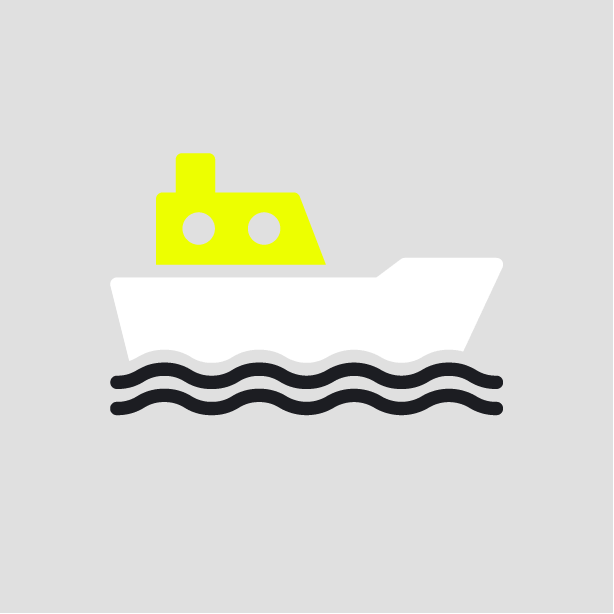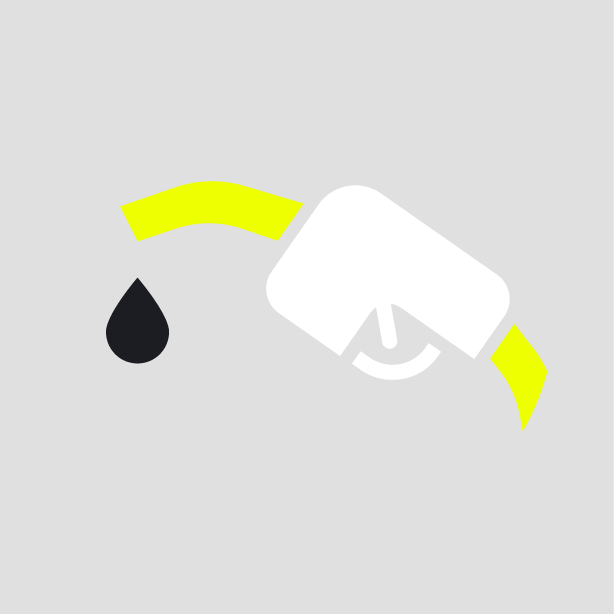-
What happened?
A vessel and the involved gangway were initially secured for quayside-vessel transfer.
However, the vessel moved 5 metres (16 feet) away, causing the gangway to fall onto the jetty fender as the mooring lines slacked due to the change in tide.
While a crew member, the injured person (IP), was attempting to recover the gangway back to the main deck alone, due to sea condition the vessel moved closer to the jetty since there was no engine manoeuvring involved.
During this movement, the IP's leg was caught in a pinch point between the end of the gangway and the main deck plating at the crash rail.
The movement of vessel at the time caused the gangway to crush IP’s leg. The IP sustained an open fracture to the left ankle.
The incident had been classified as high potential given the possibility of an amputation.
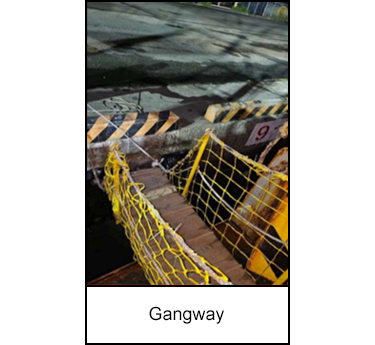
-
Why did it happen?
Inadequate risk assessment:
- Longer gangway should have been used, i.e. incorrect equipment used for the task
- Two-man job should have been adopted for the task, i.e. no buddy system established
- Caught hazards should have been identified with effective control measures put in place
Inadequate supervision/planning: No assessment by Officer-on-Watch on changes in sea conditions; not specified in the procedures.
Lack of situational awareness: The IP was unaware of the surrounding hazards and placed themselves in the line of fire.
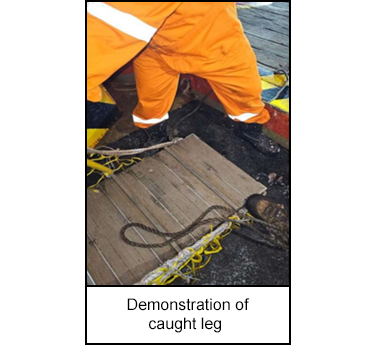
-
What did they learn?
Common pinch points may present a potential hazard and should be regularly highlighted onboard to ensure future personnel keep themselves out of the line of fire.
Adequate assessment is to be done to properly select the appropriate gangway and to ensure gangway mooring line is properly installed, secured and maintained, considering environmental conditions such as high winds and rough seas.
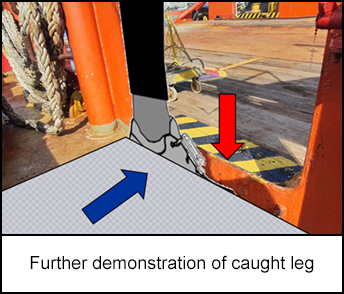
-
Ask yourself or your crew
Is there any hazard associated with the task to be carried out? What control measures are required so it can be done in a safe manner?
Is it a good timing to commence a task? For example, acceptable weather/sea conditions? Not under time pressure or exhaustion?
Before taking actions, should I inform my supervisor or line manager first?
Should I ask for help or assistance to complete such task safely?

Add to homescreen
Content name
Select existing category:
Content name
New collection
Edit collection
What happened?
A vessel and the involved gangway were initially secured for quayside-vessel transfer.
However, the vessel moved 5 metres (16 feet) away, causing the gangway to fall onto the jetty fender as the mooring lines slacked due to the change in tide.
While a crew member, the injured person (IP), was attempting to recover the gangway back to the main deck alone, due to sea condition the vessel moved closer to the jetty since there was no engine manoeuvring involved.
During this movement, the IP's leg was caught in a pinch point between the end of the gangway and the main deck plating at the crash rail.
The movement of vessel at the time caused the gangway to crush IP’s leg. The IP sustained an open fracture to the left ankle.
The incident had been classified as high potential given the possibility of an amputation.

Why did it happen?
Inadequate risk assessment:
- Longer gangway should have been used, i.e. incorrect equipment used for the task
- Two-man job should have been adopted for the task, i.e. no buddy system established
- Caught hazards should have been identified with effective control measures put in place
Inadequate supervision/planning: No assessment by Officer-on-Watch on changes in sea conditions; not specified in the procedures.
Lack of situational awareness: The IP was unaware of the surrounding hazards and placed themselves in the line of fire.

What did they learn?
Common pinch points may present a potential hazard and should be regularly highlighted onboard to ensure future personnel keep themselves out of the line of fire.
Adequate assessment is to be done to properly select the appropriate gangway and to ensure gangway mooring line is properly installed, secured and maintained, considering environmental conditions such as high winds and rough seas.

Ask yourself or your crew
Is there any hazard associated with the task to be carried out? What control measures are required so it can be done in a safe manner?
Is it a good timing to commence a task? For example, acceptable weather/sea conditions? Not under time pressure or exhaustion?
Before taking actions, should I inform my supervisor or line manager first?
Should I ask for help or assistance to complete such task safely?
A crew member sustained an open fracture to the left ankle when the vessel moved unexpectedly, causing the gangway to crush their leg. The incident, classified as high potential, occurred as the crew member attempted to recover the gangway alone.









